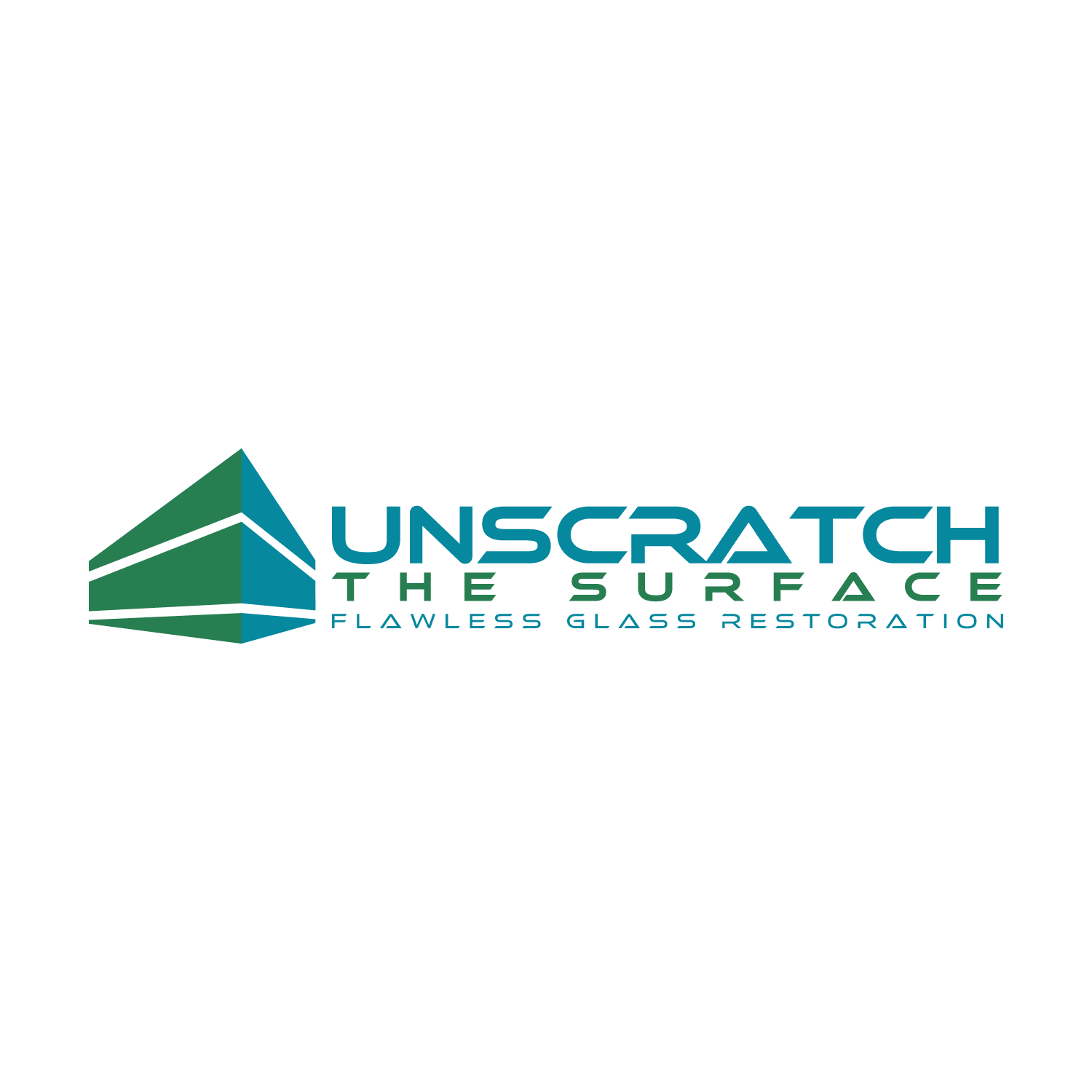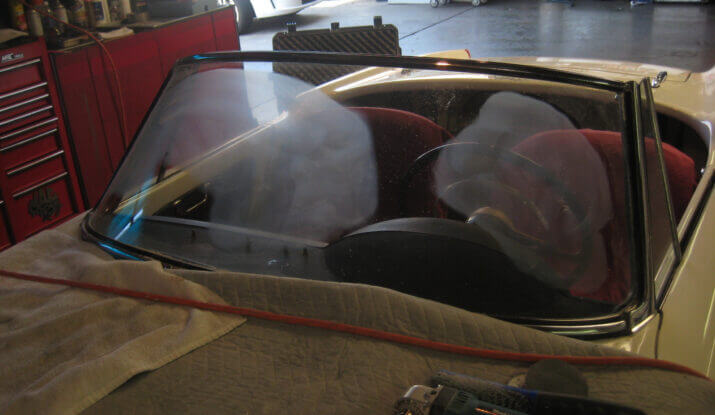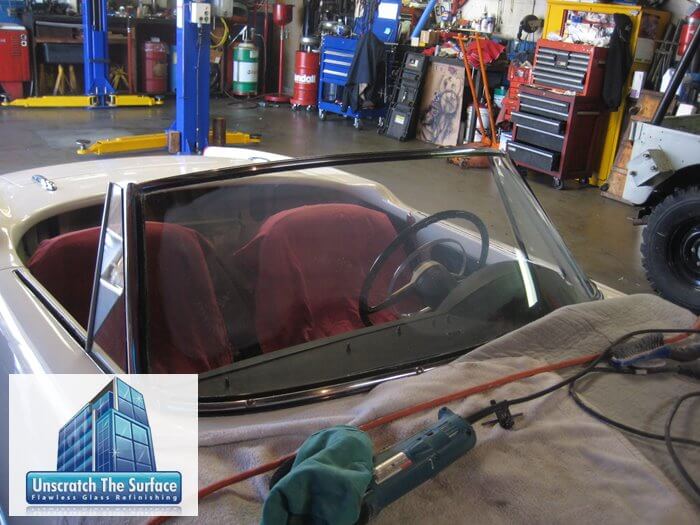Table of Contents
Secrets To Successful Scratched Windshield Refinishing
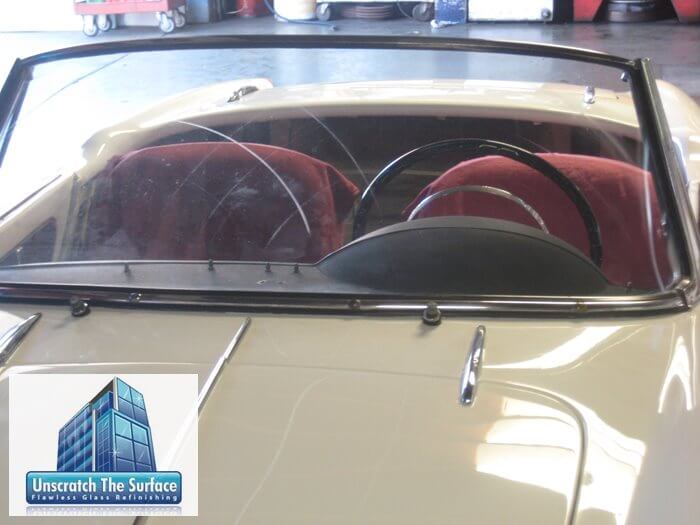
Key Highlights
- Scratched windshields can be repaired using various DIY methods, as toothpaste and baking soda.
- Professional help may be required for deep that affect the structural integrity of the windshield.
- Regular maintenance and preventative measures can help protect your windshield from scratches.
- Understanding the of a windshield and the different types of scratches is essential for effective repair.
- The step-by-step refinishing process involves cleaning the area, applying the refinishing product, and buffing for a seamless finish.
- Regular maintenance and recommended products can help prevent future windshield damage and extend its lifespan.
Introduction
A scratched windshield is not only an eyesore but also a safety hazard. It can obstruct your vision while driving and compromise the structural integrity of your car. While getting your windshield replaced can be expensive, there are ways to successfully refinish a scratched windshield on your own. By understanding the different types of scratches, assessing the severity of the damage, and using the right techniques and products, you can restore your windshield to its original condition. In this blog, we will explore the secrets to successful scratched windshield refinishing. We will discuss key highlights, such as DIY methods for minor scratches and when to seek professional help for deep scratches. We will also provide a step-by-step refinishing process and share preventative measures to care for your windshield. Understanding how windshields are constructed and the different types of scratches will help you assess the damage and choose the right approach for repair. Whether you prefer DIY methods or decide to seek professional help, this blog will provide you with the knowledge and tools to successfully refinish your scratched windshield.Understanding Windshield (Windscreen) Scratches
A windshield is made of laminated glass, which consists of a layer of vinyl sandwiched between two sheets of glass. This construction gives the windshield its strength and ability to withstand impact. When it comes to scratches, there are two main types: light scratches and deep scratches. Light scratches are superficial and can usually be repaired using DIY methods. Deep scratches, on the other hand, are more severe and may require professional help or even windshield replacement. Understanding the severity and type of scratch is essential for successful refinishing.The Anatomy of a Windshield
To understand how to refinish a scratched windshield, it’s important to know its anatomy. A windshield is made of laminated automotive glass, which consists of a layer of vinyl sandwiched between two glass sheets. This laminated construction provides structural integrity and prevents shattering upon impact. The windshield covers the entire window area of the car, providing protection from wind, debris, and UV rays. When the windshield is scratched, it can compromise its structural integrity and visibility. By understanding the importance of a windshield’s construction and how it functions, you can better assess the damage and choose the appropriate refinishing method.Types of Windshield Scratches
There are two main types of windshield scratches: minor scratches and deep scratches. Minor scratches are surface-level and can usually be repaired using DIY methods. These scratches may not affect the visibility significantly and can often be buffed out. Deep scratches, on the other hand, penetrate the scratched glass and can compromise its structural integrity. These scratches may impair visibility and require professional repair or windshield replacement. It is important to assess the severity of the scratches and understand their impact on visibility before deciding on a course of action. By identifying the type of scratch, you can choose the appropriate refinishing technique for a successful repair.Assessing the Damage
Assessing the damage to your windshield is an important step in the refinishing process. The severity of the scratch can vary, from minor surface scratches to deep scratches that penetrate the glass. To assess the damage, use your naked eye to examine the scratch. Light scratches may be barely noticeable, while deep scratches may be more pronounced and can be felt when you run your finger over them. It is important to accurately assess the severity of the damage to determine the appropriate repair method and whether professional help is needed.How to Identify the Severity of Scratches
To identify the severity of windshield scratches, a simple fingernail test can be conducted. Run your fingernail across the scratch. If your nail catches on the scratch, it indicates a deep scratch that cannot be resolved through refinishing methods. These deep scratches compromise the structural integrity of the windshield and require professional attention or windshield replacement. On the other hand, if the scratch feels smooth to the touch and your fingernail does not catch, it is likely a light scratch that can be fixed through DIY refinishing methods. Light scratches are less severe and do not affect the structural integrity of the windshield.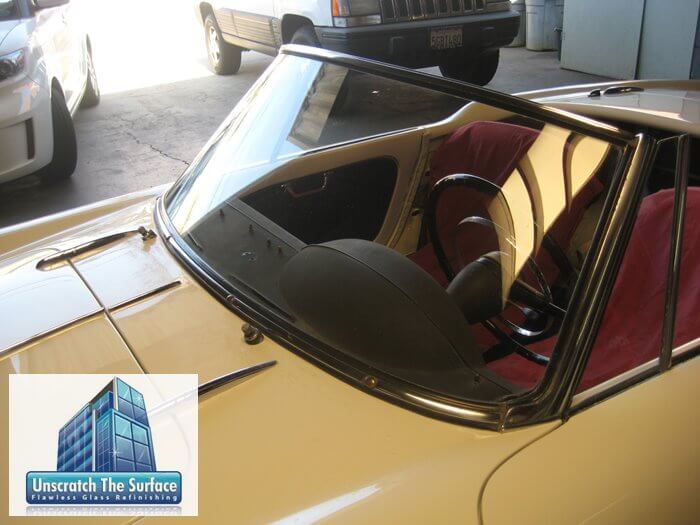
When to Seek Professional Help
While DIY methods can be effective for resolving light scratches, it is important to know when to seek professional help. If you have deep scratches on your windshield, it is best to consult a glass repair specialist or an automotive glass professional. Deep scratches compromise the structural integrity of the windshield, and attempting to fix them through DIY methods may further damage the glass. A professional can assess the damage and determine the best course of action, which may involve windshield replacement. It is crucial to address deep scratches promptly to ensure the safety of both the driver and passengers. Ignoring deep scratches can lead to further damage and safety risks while driving.DIY Windshield Refinishing Techniques
Preparing your windshield for refinishing at home involves gently cleaning the scratched area with a soft cloth and glass cleaner. For minor scratches, consider using white toothpaste or acrylic scratch remover. Alternatively, you can opt for professional products like cerium oxide. These methods can help diminish the visibility of scratches on your car’s windshield. Remember to buff and polish the treated area for a smoother finish. This DIY approach can be a cost-effective solution for light scratches.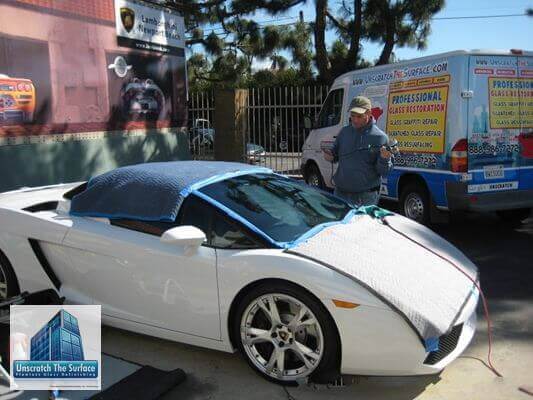
Preparing Your Windshield for Refinishing
Before you begin refinishing your scratched windshield, proper preparation is crucial. Start by cleaning the damaged area with a glass cleaner to remove dust and grime. Use a soft cloth or microfiber cloth for this task. Next, inspect the scratch under good lighting to assess its severity. If dealing with minor glass scratches, DIY methods like using white toothpaste or acrylic scratch removers can be effective. For deeper scratches, consider professional products like cerium oxide. Ensuring the surface is clean and smooth will result in a more successful refinishing process.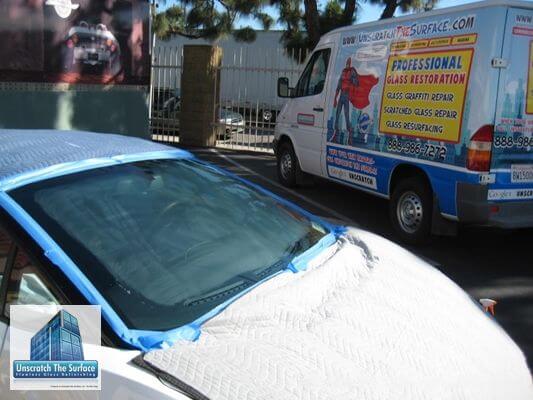
Home Remedies for Minor Scratches
If you’re dealing with minor scratches on your car’s front window, consider using household items like white toothpaste or baking soda mixed with water. These gentle abrasives can help buff out superficial scratches and restore clarity to your windshield. Remember to apply the paste using a soft cloth in a circular motion, focusing on the scratched area. Using a rotary polishing tool will work best. However, be mindful of generating too much heat when polishing a windshield. It will crack if it gets too hot during polishing. After buffing for a few minutes, wipe off the residue with a clean, damp cloth. This simple DIY method can be surprisingly effective in improving the appearance of minor scratches on your windshield. you can try some home remedies before seeking professional help. One popular method is using white toothpaste or acrylic scratch remover. Apply a small amount on the scratched area and gently rub it in using a soft cloth. Another option is mixing baking soda with water to create a paste, which can also help reduce the visibility of light scratches. Remember, these DIY methods are best suited for minor scratches and may not fully restore the structural integrity of the glass.Professional Products You Can Use at Home
When refinishing your scratched windshield at home, consider using professional products for effective results. Acrylic scratch removers and glass repair kits are convenient options to address minor scratches. Cerium oxide is another recommended product for deeper scratches, providing a polishing solution to improve visibility. These products are designed to maintain the structural integrity of your windshield and can be easily applied with a soft cloth or polishing tool for a seamless finish. Choose the right professional product based on the severity of the damage.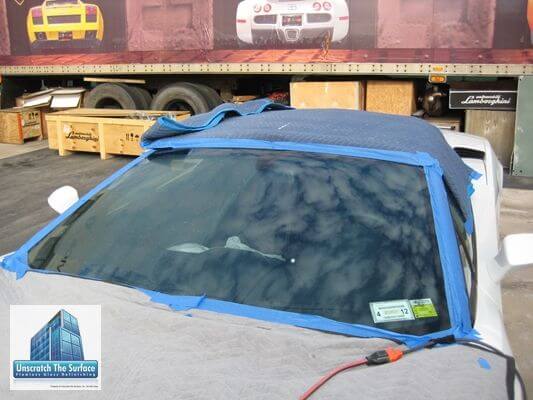
The Step-by-Step Scratched Windshield Refinishing Process
Cleaning the area around the scratch is crucial. Apply the refinishing product carefully; ensure it covers the scratched area entirely. Buff and polish the treated spot for a seamless finish.Cleaning the Area Around the Scratch
Begin by gently cleaning the area surrounding the scratch on the windshield using a mild glass cleaner and a soft cloth. Ensure the surface is free of any dirt or debris that could interfere with the refinishing process. This step is crucial to achieve a smooth and seamless finish once the refinishing product is applied. Avoid using harsh chemicals that could damage the glass further. Proper cleaning sets the foundation for successful scratched windshield refinishing.Applying the Refinishing Product Correctly
To optimize the scratched area repair, apply the chosen refinishing product with care. Ensure the surface is clean and dry before applying. Use a soft cloth or applicator to spread the product evenly over the scratch. Follow the product instructions precisely for best results. Buff the area gently in circular motions to blend the product with the surrounding glass. Check for excess product and remove it before it dries. Proper application is key to achieving a seamless finish on your windshield.Buffing and Polishing for a Seamless Finish
To achieve a flawless finish when refinishing a scratched windshield, the final step involves buffing and polishing the treated area. Using a polishing tool, gently buff the surface in circular motions to remove any remaining imperfections. This process smoothens out the scratch repair and enhances the clarity of the glass. Finish by carefully polishing the area with a microfiber cloth to ensure a seamless and shiny result. Buffing and polishing are crucial for achieving a professional-looking finish after repairing windshield scratch.Preventative Measures for Windshield Care
Regular maintenance is key to preserving your windshield. Ensure wiper blades are clean and functional to prevent scratches. Use recommended glass cleaners and a soft cloth for regular cleaning. Avoid abrasive materials that can damage the glass surface. Park in shaded areas to reduce sun exposure and potential damage. Address minor scratches promptly to prevent them from spreading and compromising the integrity of the windshield. Taking these preventive measures will extend the lifespan of your windshield and maintain visibility while driving.Regular Maintenance Tips
To maintain your car’s windshield, regularly clean it with a glass cleaner and a soft cloth. Inspect for any scratch damage that may compromise its integrity, fixing minor blemishes promptly with DIY methods like white toothpaste or acrylic scratch remover. Ensure your wiper blades are clean and functioning correctly to prevent any superficial scratches. Lastly, avoid parking under trees or in high-risk areas to minimize the chances of damage. By following these simple maintenance tips, you can prolong the lifespan of your windshield.Recommended Products for Windshield Protection
To protect your windshield, consider using products like glass cleaner with a mild abrasive, acrylic scratch remover, or a windshield polish. These products help maintain the structural integrity of your auto glass. Regularly applying a windshield protectant can prevent scratches and maintain visibility. Another option is using a glass scratch repair kit, specifically designed for minor scratches. By investing in these products and incorporating them into your car care routine, you can ensure the longevity of your windshield and avoid costly repairs.When to Replace Instead of Refinish
Signs indicating the need for windshield replacement rather than refinishing typically involve deep scratches compromising the windshield’s structural integrity. If scratches are affecting visibility, especially after attempted refinishing, it may be time for replacement. Similarly, deep scratches that can be felt when running a fingernail over them may necessitate replacement to ensure the windshield’s durability and safety features are intact. It’s crucial to assess these factors diligently to determine whether replacement is a safer option than attempting further refinishing.Signs That Your Windshield Needs Replacement
- Extensive cracking that obstructs visibility.
- Deep scratches compromising structural integrity.
- Pitting causing light refraction during sunlight.
- Chips larger than a quarter.
- Deep damage reaching the inner layer.
- Previous unsuccessful repair attempts.
